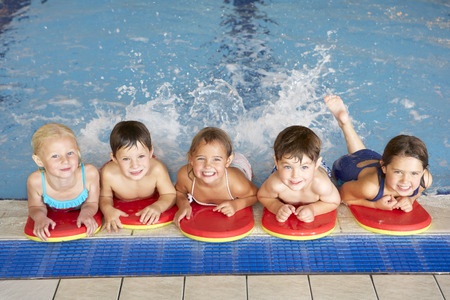Teaching your child to swim: What to expect from a good swim program
Knowing how to swim is one of the greatest skills a child can learn. Not only does it provide a lifetime of entertainment, it’s a skill that can make this summertime favorite safe and enjoyable.
The main reason parents enroll their children in swim lessons is to prevent drowning. While no program is drown-proof, equipping your child basic life-saving skills can build confidence around water and help set a foundation of swim skills to build upon.
The American Academy of Pediatrics recommends swim lessons for most children after the age of four. Before this, they cannot voluntarily hold their breath underwater for significant amounts of time. If you’d like to participate in swimming lessons with your child before the age of four, talk to your pediatrician.
Hallmarks of a good children’s swim program:
Safety First. According to Swim America, a good swim program teaches children SAFETY first. This means learning to roll over, float and yell for help. Once this skill is mastered “real swim skills” can begin.
Certified Instructors. Swim programs for preschool aged children run the gamut from structured mommy and me playtime, to a more formal atmosphere. No matter which program you choose, be sure your school has qualified instructors who are CPR certified.
Basic Water Techniques: In addition to ROLL OVER, FLOAT and YELL FOR HELP, most programs will likely teach the following “how to’s”:
- Safely enter the water
- Jump in (builds confidence)
- Blow bubbles (basics of breath control)
- Basic swim strokes (dog paddle)
- Safely Exit the water
Fun! Swimming lessons can and should be fun to make your child comfortable around the water. Good swim instructors know how to find the perfect balance between fun and safety.